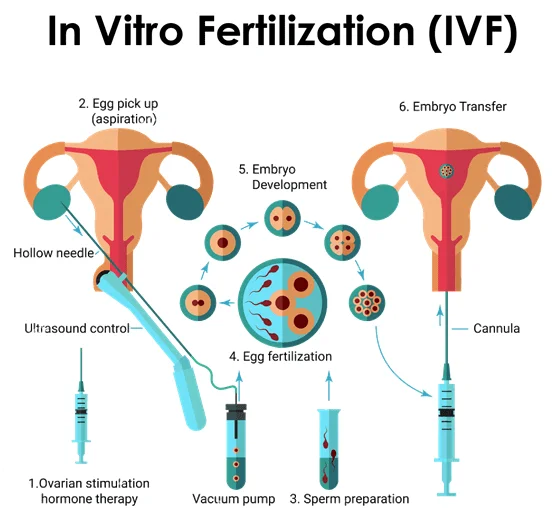10 Signs You Should See a Gynecologist
Home > Understanding IVF
our latest post
10 Signs You Should See a Gynecologist
Understanding IVF: A Step-by-Step Guide to Fertility Treatment
Subscribe To our newsletter

In vitro fertilization (IVF) is one of the most effective assisted reproductive technologies (ART) used to help individuals and couples overcome fertility challenges. Whether you’re struggling with infertility or exploring IVF as an option, understanding the process can ease your journey. This guide breaks down IVF into clear steps, helping you prepare for what lies ahead.
What is IVF?
IVF is a fertility treatment where eggs are retrieved from a woman’s ovaries and fertilized with sperm in a laboratory. The resulting embryos are then transferred into the uterus to achieve pregnancy. It is commonly used for couples facing infertility due to blocked fallopian tubes, low sperm count, ovulation disorders, or unexplained infertility.


Step-by-Step IVF Process
1. Initial Consultation and Testing
The IVF journey begins with a consultation with a fertility specialist, who will evaluate your medical history and conduct fertility tests. These may include:
✔ Blood tests to check hormone levels
✔ Ultrasound to assess ovarian reserve
✔ Semen analysis for male fertility assessment
2. Ovarian Stimulation
To increase the chances of retrieving multiple healthy eggs, fertility medications are prescribed to stimulate the ovaries. The process is closely monitored through blood tests and ultrasounds.
3. Egg Retrieval
Once the eggs are mature, a minor surgical procedure called follicular aspiration is performed under sedation. A thin needle is inserted through the vaginal wall to collect eggs from the ovaries.
4. Fertilization in the Lab
The retrieved eggs are combined with sperm in a laboratory. There are two fertilization methods:
🔹 Conventional IVF – Eggs and sperm are placed together for natural fertilization.
🔹 ICSI (Intracytoplasmic Sperm Injection) – A single sperm is injected directly into an egg, often used for male infertility cases.
5. Embryo Development & Selection
Fertilized eggs (embryos) are monitored for 3-5 days to assess their quality. The best embryos are selected for transfer.
6. Embryo Transfer
A healthy embryo is transferred into the uterus using a thin catheter. This is a painless procedure that takes only a few minutes.
7. Pregnancy Test
After 10-14 days, a blood test is done to check for pregnancy. If successful, the embryo implants into the uterine lining, leading to pregnancy.
Final Thoughts
IVF is a highly successful fertility treatment, but every journey is unique. At Elimmas Health, we provide expert IVF care, personalized support, and the latest technology to help you achieve your dream of parenthood.
📞 Book a consultation today and take the first step toward parenthood!
